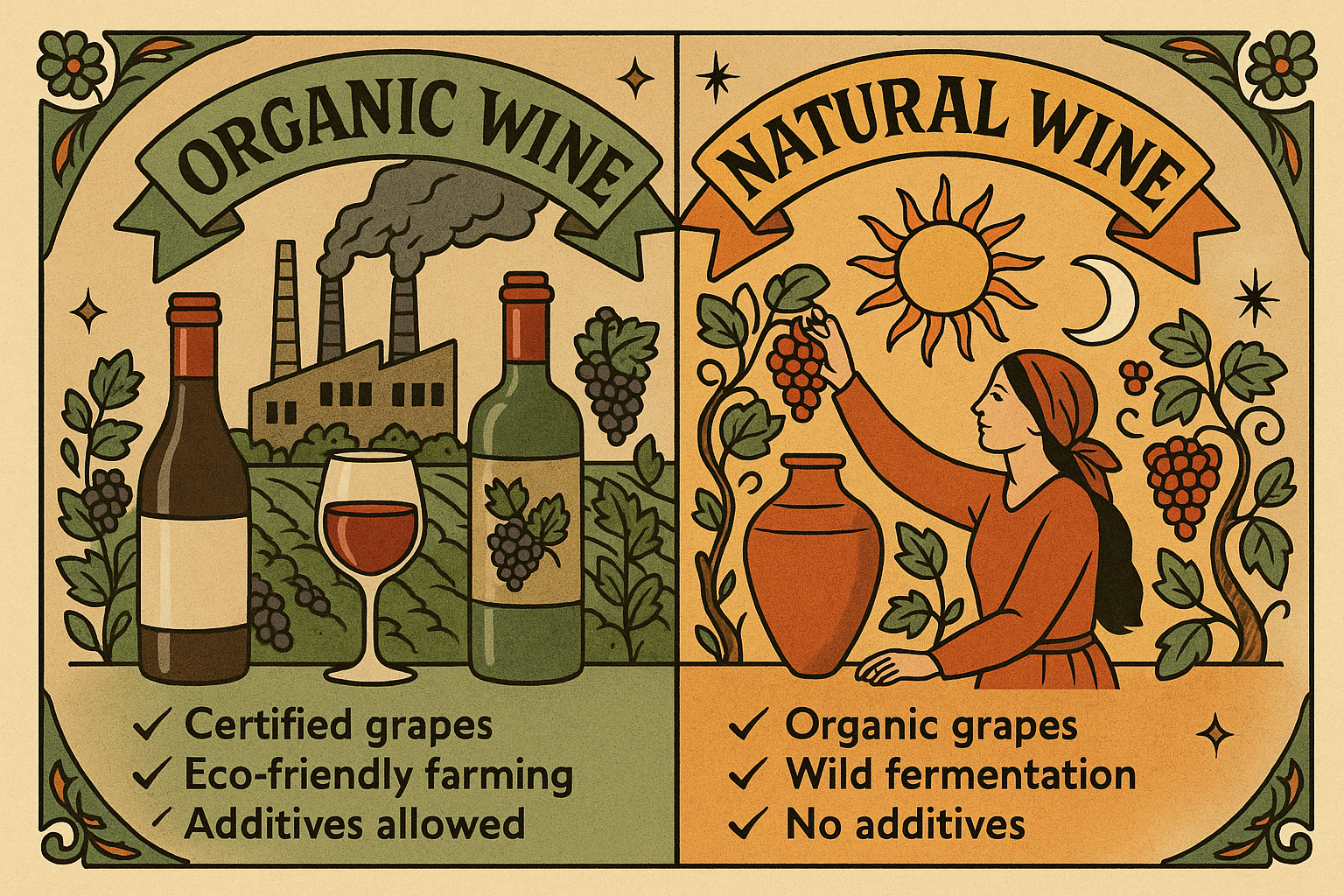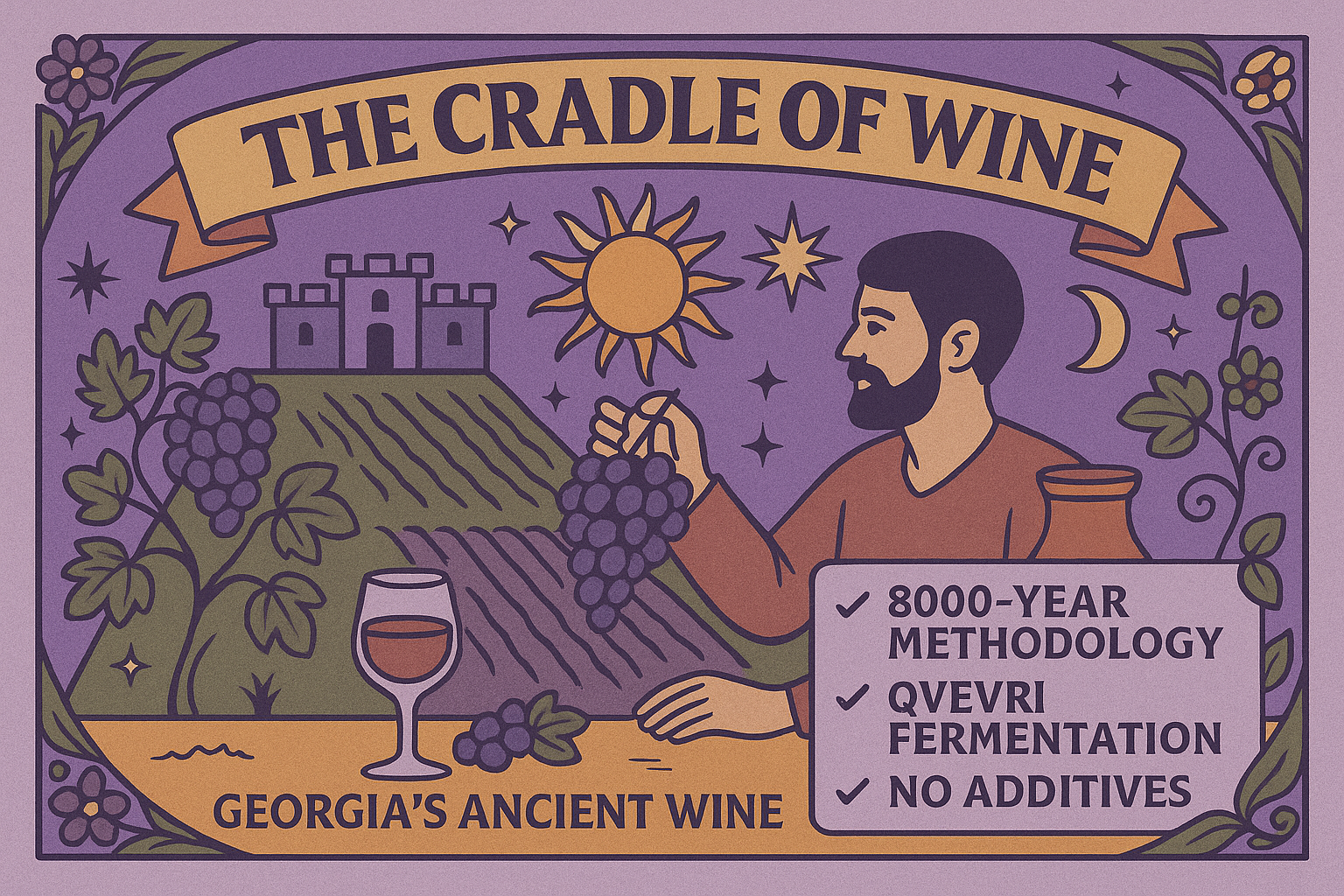Article: Natural vs. Organic Wine: What’s the Difference?

Natural vs. Organic Wine: What’s the Difference?
The Quick Answer
-
Organic wine = Industrial methods, certified grapes, but winemakers can still add yeast, sulfites, and processing agents.
-
Natural wine = Organically/biodynamically grown grapes, wild fermentation, no additives, unfiltered, unrefined.
-
Biodynamic wine (bonus) = Follows Rudolf Steiner’s holistic farming principles, with lunar cycles and soil health central.
👉 In short: Organic = industrial certification for bio wines, Natural = nature's product with minimal intervention, Biodynamic = cosmic farming on steroids.
Organic Wine: Certified Clean, But…?
Organic wine refers to wine made from certified organic grapes, meaning:
✅ No synthetic pesticides or herbicides, but still used in the process
✅ Eco-friendly vineyard practices
✅ Certified by official organic bodies (EU, USDA, etc.)
But once the grapes are harvested, organic winemaking still allows additives. That means sulfites, lab-cultured yeast, and other processing aids can be used — as long as they comply with organic rules.
(Pro tip: Organic ≠ automatically natural.)
Natural Wine: A Philosophy, Not a Certification
Natural wine is more of a philosophy than a regulated category. Common principles include:
✅ Organically or biodynamically grown grapes
✅ Wild yeast fermentation (no lab packets)
✅ Zero additives (no sulfites, color fixes, stabilizers)
✅ Usually unfiltered, unrefined
The result? Natural wine is a living, raw expression of the vine, whereas organic wine is clean but still meddled with chemically and “controlled.”
Biodynamic Wine: The Cosmic Middle Ground
Biodynamic wine comes from farms that follow a holistic, lunar-calendar-based approach to agriculture. Think of it as “organic-plus,” where the vineyard is treated as a self-sustaining ecosystem.
Many natural winemakers also use biodynamic practices, but not all biodynamic wines are natural.
How to Spot Them on the Label
-
Organic wine → Look for official seals: EU organic leaf, USDA Organic.
-
Biodynamic wine → Look for Demeter or Biodyvin certification.
-
Natural wine → No global certification yet; look for cues like “unfiltered,” “no added sulfites,” or ask your merchant.
Taste & Winemaking Differences You’ll Notice
-
Organic → Clean, fruit-driven, sometimes polished.
-
Natural → Wild, funky, alive; expect cloudiness, unpredictable aromas, but also exciting complexity.
-
Biodynamic → Often vibrant, terroir-driven, somewhere in-between.
For example:
-
Our Orange Affair 2022 → classic unfiltered orange wine.
-
Our Norah’s Tavkveri 2022 → juicy Georgian red, made naturally.
Georgia’s 8,000-Year Tradition
In Georgia, wine has been “natural” for millennia. Grapes ferment in qvevri (clay vessels buried underground), with no additives, no filters, just patience and tradition.
For us, the debate isn’t really a debate — wine is meant to be natural. 🏺🍇
Taste the Difference
Want to explore real natural wines? Check out our small-batch, minimal-intervention selection from Georgia.






Leave a comment
This site is protected by hCaptcha and the hCaptcha Privacy Policy and Terms of Service apply.